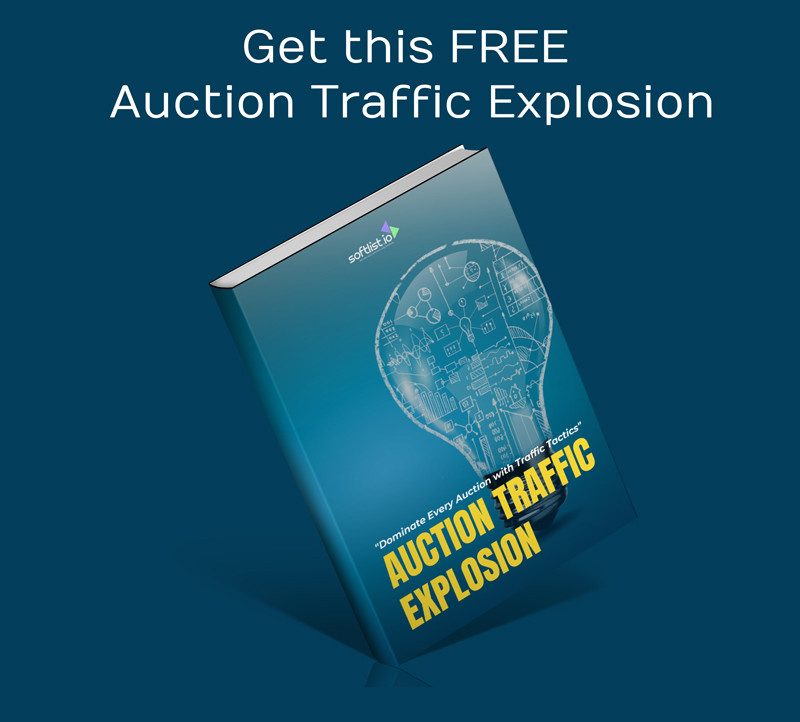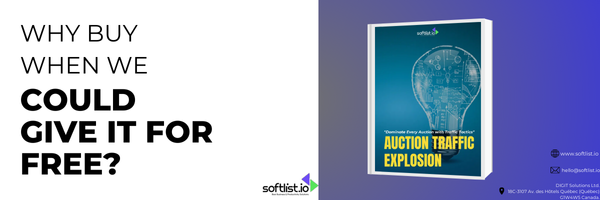The global eyewear market is poised for continued growth, with e-commerce transforming how consumers shop for glasses, contact lenses, and sunglasses.
According to recent data from Statista, glasses online in Canada this year, the eyewear market is projected to reach revenues of up to US$151.40 billion (CA$216.90 billion) worldwide, expanding at a compound annual growth rate of 3.35% between 2025 and 2029. While the United States has long cornered the eyewear market, countries like Canada are catching up due to the rising demand for vision care products and services.
In fact, Canada’s Competition Bureau noted in a 2022 report that as Canadian consumers seek greater choice, lower prices, and improved convenience, Internet-based eyewear retailing has flourished. However, this surge in demand has also led to intense competition among retailers vying for visibility in the digital space.
On this front, search engine optimization (SEO) has become indispensable for eyewear retailers. As SEO specialist and link-building agency founder Nick Zviadadze emphasized in an Entrepreneur article, “In 99% of cases, people click on the top results on Google. This means that if you’re not positioned there, your competitors will get all the attention and you’ll miss out on valuable customers.” Conversely, a robust SEO strategy helps drive organic traffic, boost online visibility, and convert site visitors into loyal customers.
Canadian eyewear brand Clearly, along with other major players like Warby Parker, showcases how effective SEO strategies can help brands thrive in this competitive market. This article delves into their tactics and highlights best practices for eyewear retailers to stay ahead.
A look at Clearly’s E-Commerce Success

Source: pexels.com
Clearly is a leading eyewear retailer known for its affordable glasses and commitment to customer satisfaction. Founded in 2000, the brand has become a go-to option for shoppers seeking quality glasses online in Canada. Since its inception, the brand has grown into a household name, offering all manner of affordable eye care products tailored to individual needs. Clearly’s success is underpinned by its ability to blend a user-friendly website with an SEO-driven approach.
In terms of its on-page SEO strategy, Clearly’s website is a masterclass in intuitive design. It features simple navigation, quick loading times, and seamless mobile responsiveness—all of which are key factors for SEO rankings. For instance, according to an Enterprise Apps Today article on web design statistics, 47% of users expect a web page to load in 2 seconds or less, with 40% of users abandoning a site that takes over 3 seconds. Their findings show that slow-responding websites can lead to a $2.6 billion annual loss in sales for retailers.
Moreover, the pages on Clearly’s site are logically organized, making it easy for users to find products or learn more about eyewear care. This structure reduces bounce rates and enhances dwell time, both critical to SEO performance.
Notably, the brand also excels in creating valuable content for its audience. Its blog, The Look, features useful product guides like “Which Contacts Are Right For Me?” and “What Do the Numbers on Your Glasses Mean?” which attract organic traffic by answering common customer queries. By targeting informational keywords and incorporating internal links to product pages, Clearly effectively funnels visitors toward purchasing decisions.
Meanwhile, Clearly’s product pages are optimized with keyword-rich titles and descriptions, high-quality images, and compelling calls-to-action (CTAs). They also include detailed specifications, customer reviews, and FAQs, improving search rankings and providing customers with all the information they need to make a purchase.
Competitor Analysis: Warby Parker

Source: pexels.com
Warby Parker, a trailblazer in the U.S. eyewear market, revolutionized the industry with its direct-to-consumer (DTC) model. Known for stylish, affordable glasses and a home try-on program, Warby Parker has carved its own niche in the cutthroat eyewear market.
Over the past few years, the brand has made headlines as it pivoted from being an online DTC purveyor of spectacles to opening brick-and-mortar locations. Per Retail Dive, the move has proven to be successful. In 2024, Warby Parker reported third-quarter net revenue growth of 13.3% year over year to US$192.4 million (CA$275.63 million). More specifically, retail revenue increased by about 20% while e-commerce revenue grew by 1%.
Much like Clearly, Warby Parker’s website is designed with SEO in mind, offering fast loading times and a mobile-first approach. Given that over 50% of global website traffic comes from mobile devices, this focus ensures they capture a broad audience while meeting Google’s mobile optimization criteria.
A case study conducted by ad agency G&Co. also reveals that the brand prioritizes omnichannel retail to strengthen its e-commerce presence. Through the official app and web storefront, shoppers can browse and purchase eyewear. Both of these platforms are also equipped with an augmented reality (AR) feature that allows users to try on a pair of glasses virtually. On the other hand, the secondary app is aimed at fostering brand loyalty, encouraging shoppers to renew their prescriptions using the brand’s telehealth service.
SEO Best Practices for Eyewear Retailers
These top eyewear brands teach us that SEO is no longer an optional marketing strategy. Instead, it’s a vital tool for growth. To help budding eyewear retailers understand where to start with their own SEO strategies, here are a few best practices to keep in mind:
Keyword Research and Targeting
An effective SEO strategy starts with understanding your target audience. In a Forbes article on this topic, John Hall explains that keyword research gives brands insight into what questions, phrases, and words your target audience is typing into Google. Combine this with search intent research, and you can better understand a customer’s main goal when searching a topic. Putting this into practice, targeting “best glasses for sports” or “affordable progressive lenses in [city]” helps attract high-intent customers. You can also explore long-tail keywords, which are essential for niche targeting. Phrases like “eco-friendly glasses under $100” face less competition while attracting more qualified leads.
On-Page Optimization
As we discussed earlier, optimizing product pages is an area that Clearly excels in. One look at their website and you’ll be greeted with detailed product descriptions, high-resolution images, and compelling CTAs, all of which are critical for grabbing customers’ attention. In addition to this, you can include structured data (e.g., pricing, availability, and ratings) as having this information readily available can improve click-through rates from search engine results.
It’s also wise to implement internal linking, as Clearly does for its blog page. This approach of creating a web of internal links between product pages, blog posts, and category pages helps improve site crawlability and keeps visitors engaged longer.
Local SEO
For smaller businesses wanting to gain traction in their local area, paying attention to local SEO is essential. Our post Benefits of Local SEO, outlines that this tactic helps businesses connect with nearby customers more effectively. For this, you can begin by creating or optimizing a Google My Business (GMB) profile, which can significantly enhance local search visibility. Make sure to include up-to-date information, such as store hours and customer reviews.
You can also attract local customers by partnering with local blogs or organizations to gain backlinks. In turn, this can improve your authority in regional searches. Additionally, encouraging satisfied customers to leave reviews strengthens your local SEO efforts.
Conclusion
The eyewear industry’s shift to e-commerce has made SEO a critical tool for success. Major brands like Clearly and Warby Parker demonstrate how tailored SEO strategies can drive traffic, boost visibility, and ultimately increase sales.
For eyewear retailers looking to similarly thrive in this competitive space, investing in a robust, data-driven SEO strategy is critical. By focusing on keyword research, on-page optimization, and local SEO, brands can build a strong foundation for growth.
Remember, SEO is an ongoing process—one that requires constant adaptation to stay ahead of industry trends and consumer behavior. With the right approach, SEO can transform your online store into a leading player in the ever-expanding eyewear market.
FAQs About Best SEO Practices
Use tools like Google Analytics to track metrics like organic traffic, bounce rate, and keyword rankings. If you see growth in these areas, your strategy is likely on the right track. Make adjustments as needed.
How can I optimize my website for local searches?
Start by creating a Google Business Profile with accurate details about your store—address, hours, phone number, etc. Use location-based keywords like “eyeglasses in [city]” throughout your site, especially on product and service pages. Ensure your site is mobile-friendly, as most local searches happen on phones.
What keywords should I target for my eyewear store?
Focus on keywords consumers actually search for, like “affordable prescription glasses,” “designer frames,” or “[brand] sunglasses.” Use tools like Google Keyword Planner or SEMrush to find terms with decent search volume and low competition. Don’t forget long-tail keywords, like “best eyeglasses for round faces.”
How important is content for SEO in the eyewear industry?
Very important. Write informative blog posts on topics people care about—like “How to Choose Glasses for Your Face Shape” or “Benefits of Blue Light Glasses.” High-quality content can bring traffic and establish your authority, which search engines reward.







